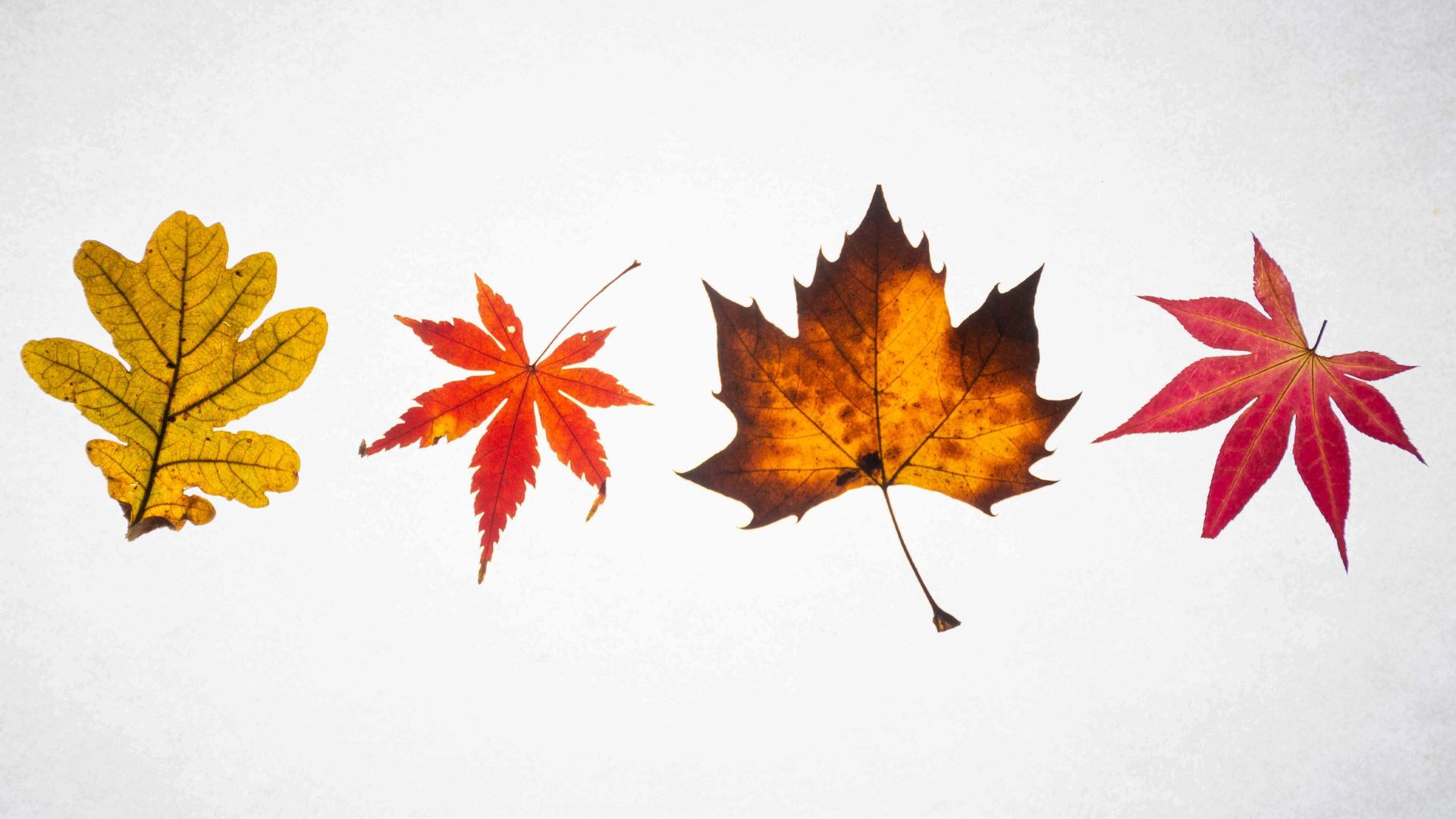UK politics, the economy, and international events aside, this autumn has already been wonderful. The colours of the changing leaves are intense, and we’ve been lucky with the weather. The yellow grass has vanished, replaced by bright green blades glistening in warm sunlight. The trees are providing a beautiful distraction from the woes of the world, juxtaposing yellows, reds, greens, and browns. Virginia creeper is crimson, Japanese maples are turning to orange and red. There are thousands of shades. An amazing display.
Every season has its aesthetic. Autumn is the time when most trees and shrubs are at their best. In the US they even have an affectionate term for the leaf aesthetes who go out into the woods in the fall simply to stare: tree-peepers. Trees are a great source of joy, a free, rapidly changing gallery that almost anyone can appreciate.
But we only have so many words to describe the colours of these leaves. Although I haven’t used “ochre” and “puce” yet, nor “umbria”, “beige” or “sepia”, I’ll run out of colour-words long before I’ve described all the shades I can see from my window.
Would having a larger colour vocabulary affect my experience of autumn? Some people have claimed so. For much of the 20th century a form of linguistic relativism, the Sapir-Whorf hypothesis, was widely taught. In its strongest form, this was the idea that our language determines our thought. Different words give us a different world. In the most repeated (and most contested) example, the Inuit have many more words to describe snow than we do, so they supposedly have a completely different experience of it.
Benjamin Lee Whorf started this in 1940 by pointing out that we use “snow” to describe falling snow, snow on the ground, hard-packed snow, slushy snow, and wind-driven snow, whereas the Inuit have specific terms for these things, and words for further types of this white stuff too. Because of their language, Inuit people were believed to inhabit a different reality. This pattern was thought to generalise to other areas of life, with words always determining experience.
The theory of linguistic determinism in this strong form, however, is a myth. It was one aspect of a general trend towards extreme forms of relativism in anthropology. But it doesn’t match with the facts, as Steven Pinker and many others have demonstrated. Having more colour words almost certainly wouldn’t mean that I would experience autumn leaves in a radically different way from how I do now. Although our languages differ considerably, there is far more that we have in common perceptually as human beings than the Sapir-Whorf hypothesis suggests.
Cultures differ of course, but language doesn’t filter our experience to the degree that some have thought it does, though it obviously has an impact on our ability to communicate that experience.
Nevertheless, a richer vocabulary of colour words can influence perception to some degree. This has been shown with the Russian language, for example, which has different words for blue and light blue. Russian speakers need to decide which of these words to use on any occasion, and as a result of this they are faster at deciding whether a blue is a regular blue or a light blue than are non-Russian speakers.
Back to autumn leaves. Why have human beings evolved to be such connoisseurs of trees and other plants changing colour? Why do we pay so much attention to these colours and care so much about them?
Perhaps it is because throughout our longest period of evolution in the Pleistocene our ancestors needed to react quickly to early signs of seasonal change. Autumn would have been the time to start gathering and storing resources to survive the cold period that was to come. Those who were oblivious to the first signs that winter was on its way would possibly not have bothered to forage and so would have failed to store enough food and fuel to survive until spring. Over time the genes of tree-peepers would have tended to get passed on more than those of people insensitive to leaves. Gradually tree-peeping would have become the norm.
Whether or not this highly speculative evolutionary explanation is accurate about how so many of us ended up being focused on leaf hues, the trees are certainly telling us something important now: the seasons are changing. Even though the sun is still shining, winter will soon be here. We should enjoy the colours of autumn and prepare for much colder days ahead.



